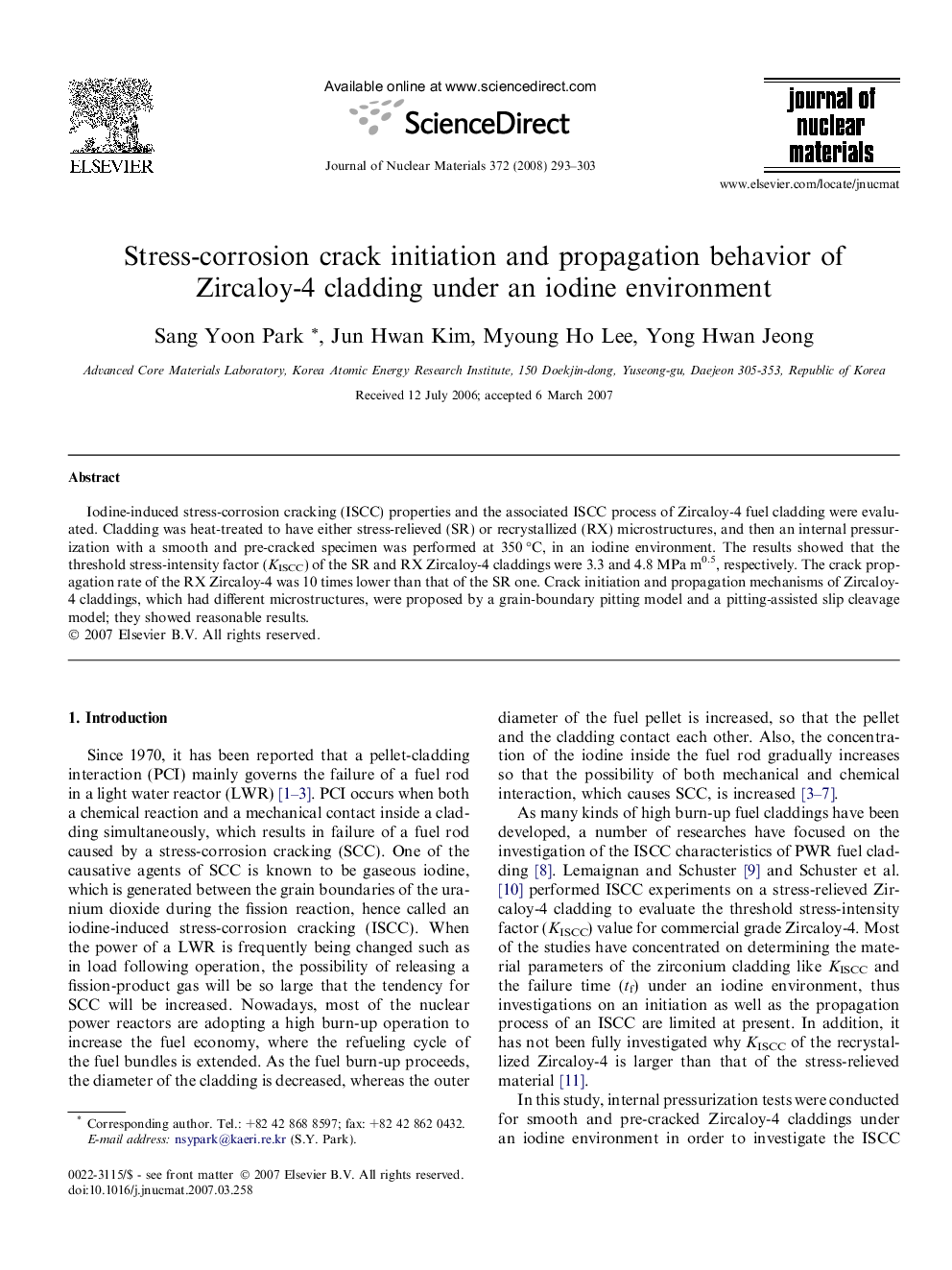| Article ID | Journal | Published Year | Pages | File Type |
|---|---|---|---|---|
| 1569013 | Journal of Nuclear Materials | 2008 | 11 Pages |
Abstract
Iodine-induced stress-corrosion cracking (ISCC) properties and the associated ISCC process of Zircaloy-4 fuel cladding were evaluated. Cladding was heat-treated to have either stress-relieved (SR) or recrystallized (RX) microstructures, and then an internal pressurization with a smooth and pre-cracked specimen was performed at 350 °C, in an iodine environment. The results showed that the threshold stress-intensity factor (KISCC) of the SR and RX Zircaloy-4 claddings were 3.3 and 4.8 MPa m0.5, respectively. The crack propagation rate of the RX Zircaloy-4 was 10 times lower than that of the SR one. Crack initiation and propagation mechanisms of Zircaloy-4 claddings, which had different microstructures, were proposed by a grain-boundary pitting model and a pitting-assisted slip cleavage model; they showed reasonable results.
Related Topics
Physical Sciences and Engineering
Energy
Nuclear Energy and Engineering
Authors
Sang Yoon Park, Jun Hwan Kim, Myoung Ho Lee, Yong Hwan Jeong,
